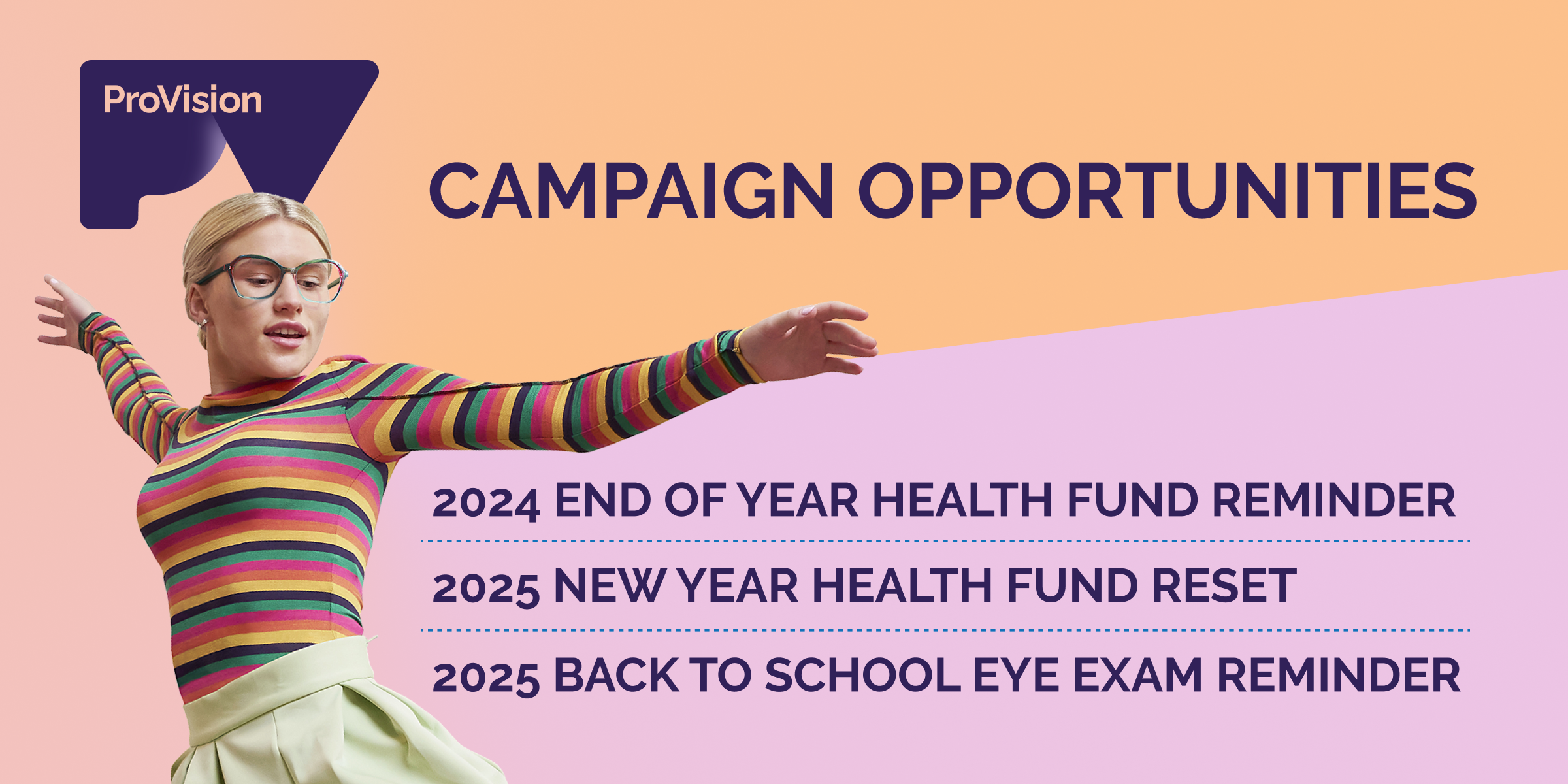
Differentiate your practice by promoting optimal vision on the road.
We have identified a significant opportunity to help you differentiate your practice by focusing on an important area of eyecare that no other eyecare retailer is currently talking about. As eye care professionals, you have an important role and duty of care to educate your patients about the inextricable link between vision and driver safety. We know that vision is the most important source of information for a driver (responsible for around 90% of the information used for driving) and that uncorrected vision is a key contributor to crash risk.
Common Patient Symptoms
- Lack of clarity recognising details on road signs, number plates or text in the distance
- Night driving glare and flare with light sensitivity from oncoming headlights
- Lack of depth perception when judging distance of oncoming vehicles particularly at night
- Hesitation and avoidance of night driving or driving in unfamiliar environments
Whilst competitors remain relatively silent around vision and driver safety, now is your opportunity to promote heavily and solidify your position as a leader in this area.
Driver Safety Category Brochure
Recommendations around driver safety solutions are part of providing optimal patient care, and will assist with providing:
- Larger fields of view when looking in side-view mirrors or over one’s shoulder when overtaking (lens design)
- Better depth and distance perception (optimisation)
- Better night vision, reduced halos around lights and better contrast at dusk and dawn (control of higher order aberration)
- Reduced glare from oncoming headlights (multi-coats)
Patient Symptoms & Potential Solutions
| Sign | Symptom | Solution | The Patient Discussion |
| Less efficient eye movements, slower decision making | Having to move the head more to see side-view mirrors ie. reduced visual fields, having to turn the head more to check when overtaking or reversing, lack of confidence at road junctions, difficulty seeing GPS. | Include a lens with reduced aberration.
Progressive lens – design that gives preference to distance and intermediate areas. Single vision – low aberration design, multi aspheric design. |
‘The symptoms you have often are related to reduced field of vision… I have a lens that gives clearer vision out towards the edge… so you can see things more quickly/clearly…
so you will need to turn your head less…’ |
| Slower decision making | Difficulty judging the position and speed of oncoming vehicles, difficulty driving down a narrow road with cars parked on either side, difficulty manoeuvring through multi-story car parks. | These symptoms generally reflect poor distance and speed perception, so the solution again is a low aberration lens where the aberration is matched as the eyes scan across the lens. | ’The symptoms
you have are often related to poor depth perception… I have a lens that will make the eyes work better together… to help you judge distances more easily…’ |
| Reduced contrast sensitivity, decreased low contrast visual acuity, increased amounts of Higher Order Aberration
(HOA). |
Difficulty reading road signs at night, halos around lights, loss of confidence driving at night. | A lens with HOA control. HOA cannot be corrected by a lens, but compensation can be built into the script. With most lens manufacturers this includes physiological modelling to produce averages to be incorporated into the lens design. | ‘The symptom you have …halos around lights…can be caused by a complexity of your prescription that we can build a solution for in your lens… this will help you to see signs more clearly… reduce halos around lights…’ |
| Slower dark adaptation, greater internal light scattering due to lens opacity. | Glare from oncoming headlights, reflections from the back surface of the lens (especially from SUV headlights), multiple images of oncoming headlights. | There is some evidence that night myopia may be triggered by HOA.8 So a solution should include the full script with a lens that offers HOA control. | ‘There are complexities to your prescription that we can resolve by using a specific lens design… may help you see better at night…’ |
| Night Myopia (in the pre-presbyope). | ‘I don’t drive at night as I can’t see’ | There is some evidence that night myopia may be triggered by HOA.8 So a solution should include the full script with a lens that offers HOA control. | ‘There are complexities to your prescription that we can resolve by using a specific design of lens.. may help you see better at night..’ |
| Reduced visual acuity due to glare impact. | ‘Sometimes I struggle to see when there’s a lot of glare, and I have trouble making out oncoming cars’ | Polarised sunglasses remove glare and block harmful UV. Studies showing a driver travelling at 80km/hr gains 7 metres of braking distance when wearing polarised sunglasses. | ‘There are sunglasses that will help you to see better.. reduce brightness and glare directly from the sun and reflecting off the road and other surfaces…‘ |





